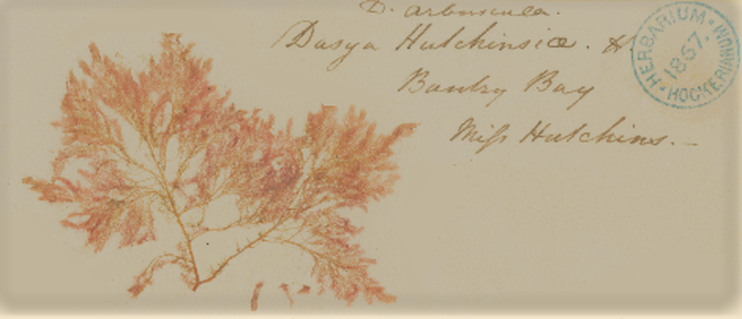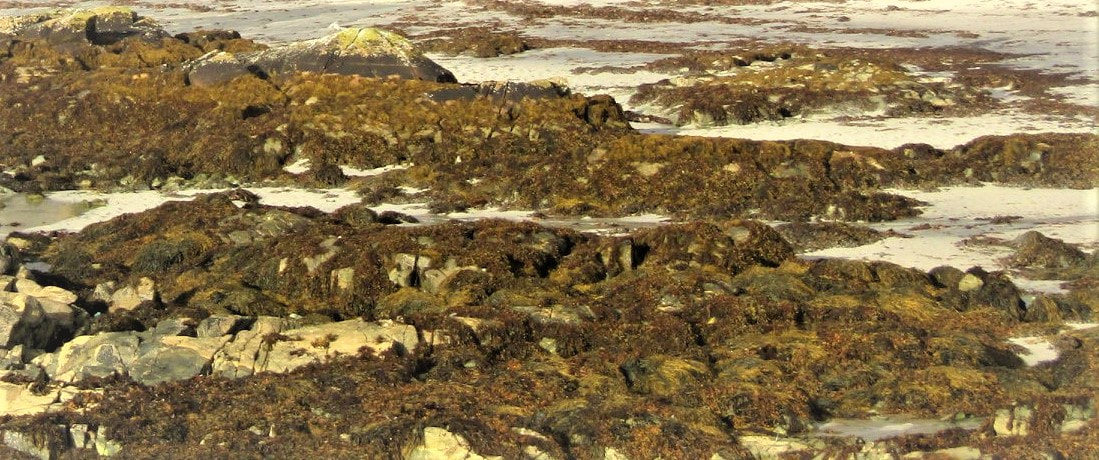|
Ellen HutchinsEllen Hutchins was born in Ballylickey in the Bantry Bay area of West Cork in 1785. While in school in Dublin, Ellen’s health began to deteriorate and she was placed in the care of a family friend, Dr Whitley Stokes. Stokes encouraged Ellen to spend time outdoors in order to improve her health and suggested that she embark upon the study of natural history and specifically botany. She soon returned home to Ballylickey to take care of her widowed ailing mother and paralysed brother. There she became a field botanist and specialised in non-flowering plants (cryptogams) including seaweeds, freshwater algae, lichens, mosses and liverworts. Ellen became an avid scholar, cataloguing and accurately illustrating the very many marine and terrestrial specimens she discovered in Cork, some of which were newly identified. Among her achievements was a large corpus of detailed watercolour illustrations, as well as dried specimens that she annotated in detail. In an age when women had little access to education or academic pursuits, Ellen’s ability to identify new plant species, her generosity in sharing specimens and her meticulous drawings gained admiration from the leading botanists of the day. Years later, James Townsend Mackay, curator at the Botanic Garden of Trinity College, included many of Ellen’s finds in his Flora Hibernica, while Dawson Turner – eminent botanist from Great Yarmouth (Norfolk) – engraved her drawings in Historium Fuci. William Jackson Hooker’s major work on liverworts, British Jungermanniae, also includes a great many of Ellen’s finds. However, by 1813 Ellen's health had deteriorated once again. For this reason, or because of a family dispute, Ellen and her mother were soon forced to leave Ballylickey and move to Bandon. After her mother died, she returned to the Ballylickey area and was cared for by her brother Arthur and his wife Matilda at Ardnagashel. Ellen died there on 9 February 1815, shortly before her thirtieth birthday. Ellen’s short life was marred by intermittent ill health, caring responsibilities and family problems, making her achievements in the sciences all the more admirable. She was buried in Garryvurcha churchyard, Bantry, in an unmarked grave. On her death, her collection of specimens and drawings passed to her greatest mentor and friend Dawson Turner. Ellen is memorialised in the names of a number of species including the lichen ‘Lecania hutchinsiae’, the marine alga ‘Cladophora hutchinsiae’ and the moss ‘Ulota hutchinsiae (Sm.) Hammar’ with the common name 'Hutchins’ Pincushion'. Most of her drawings are now in the Royal Botanic Gardens, Kew, while her specimens are in the Natural History Museum in London, Trinity College Dublin and the New York Botanical Garden. In 2015, a plaque was unveiled in Garryvurcha graveyard to mark the bicentenary of Ellen’s death, as part of the Ellen Hutchins Festival organised by Bantry Historical Society and the National Parks and Wildlife Services. An independent non-profit organisation now runs the annual festival, along with a website (www.ellenhutchins.com) and has produced publications on botany and Ellen’s story. An exhibition celebrating the short life and ground-breaking work of Ellen Hutchins is currently on display in the Boole Library, in the main campus of University College Cork (UCC), and runs until 21 December (2018). Admission is free. To learn more about Ellen Hutchins, click here. To view some of the specimens collected by Ellen, and now in the Natural History Museum, London, follow this link and search "Ellen Hutchins". Many thanks to Madeline Hutchins, great great grandniece of Ellen Hutchins, for kindly sharing information about her relation with us.
0 Comments
Your comment will be posted after it is approved.
Leave a Reply. |
Herstoric IrelandImmerse yourself in the history of Irish women here! Archives
March 2019
Categories
All
|



 RSS Feed
RSS Feed
